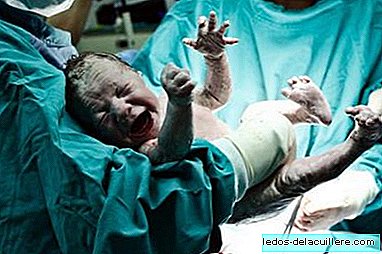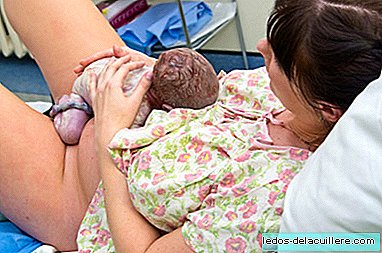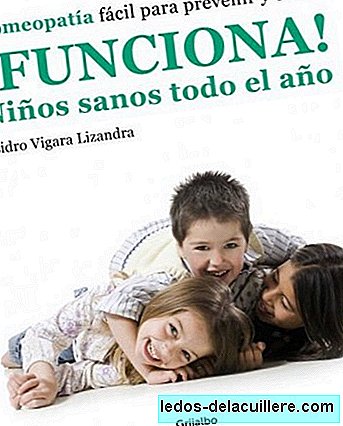
Vaginal bleeding is one of the immediate risks of postpartum, fortunately not too frequent. is defined as the loss of more than 500 milliliters of blood at delivery or 24 hours after delivery (1,000 ml. In case of caesarean section).
Postpartum hemorrhages occur in approximately 10% of births and are one of the most important causes of maternal morbidity and mortality in the world, although in our environment they are usually well controlled.
We commented recently that about 75% of cases of postpartum hemorrhage are due to atony or uterine hypotonia, but there are others causes of postpartum hemorrhage that we will tell you
The main reasons that cause them are:
Uterine atony It is the usual reason for the bleeding of the birth, produced when the contraction of the uterus does not occur and the hemostasis (to stop the bleeding) is not performed by mechanical compression of the vessels of the placental bed by the uterine muscle fibers.
The birth canal tears They are the second most frequent cause of postpartum hemorrhage. Tears can coexist with an atonic uterus. Postpartum hemorrhage with a retracted uterus is usually due to a tear of the cervix or vagina. There are different types of tears and proper medical attention will try to repair to stop the bleeding. These tears or lacerations usually manifest as active vaginal bleeding typical of instrumented births or with episiotomy that must be repaired by suturing. Sometimes they can also do it as bruises (there are different types of pelvic hematomas: vulvar, vaginal and retroperitoneal), mostly caused by lacerations of venous vessels during childbirth.
Retained placenta, which occurs in approximately 0.5% to 1% of births. It occurs if controlled cord traction does not work and the placenta is not expelled after 30 minutes.
There may also be a retention of placental remains if part of the placenta (one or more lobes) is retained, which also prevents the uterus from contracting effectively.
Coagulation disorders or coagulopathies, which can be congenital (von Willebrand disease, hemophilia type A) or acquired during pregnancy (severe preeclampsia, HELLP syndrome, amniotic fluid embolism, abruptio placentae, sepsis).
Uterine rupture, which is defined as the loss of integrity of the wall of the uterus. The most commonly implicated irrigation factor is the existence of previous uterine surgery, with the type of cesarean section with low transverse segmental hysterotomy being the most frequent. Other related factors are traumatic births (instrumental, large extractions, dystocia) and uterine hyperdynamics or hyperstimulation.
Uterine dehiscence: unlike the uterine rupture itself, dehiscence causes separation of the myometrial layer that sits on a previous uterine scar. They are rarely responsible for moderate-severe postpartum hemorrhages.
Uterus inversion occurs when this organ has reversed when it turns upside down: the internal part becomes external during the expulsion of the placenta. It is usually caused by improper cord traction or continuous and exaggerated oppression of the uterine fundus when the placenta has not yet been expelled. The correction of the uterine inversion should be done immediately and according to the degree of inversion.
Postpartum hemorrhage is one of the leading causes of maternal mortality in both developing and developed countries. Worldwide, as estimated by WHO, severe postpartum hemorrhage occurs in about 11% of women who has a live birth.
The incidence is much higher in developing countries, where many women do not have the possibility of having access to a delivery assisted by trained personnel and where the active behavior in childbirth may not be routine practice.
Before a postpartum hemorrhage, medical attention is crucial for immediate action, and each trigger will guide the procedure to stop the bleeding and prevent further damage to the mother, depending on the causes and evolution. Although there are some risk factors, most postpartum hemorrhages occur in women who do not have these factors.
Photos | Thinkstock
More information | WHO, GBA Ministry of Health
In Babies and more | Immediate postpartum risks: inversion of the uterus, what are secundins?












